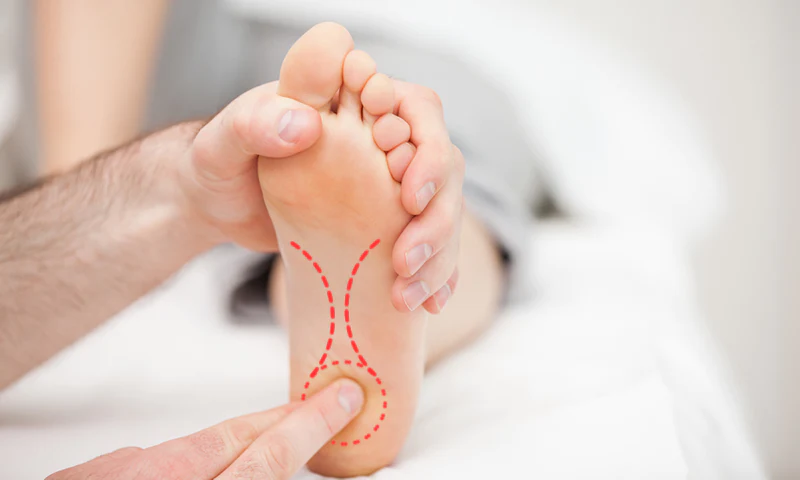- Rest: Avoid activities that worsen the pain and provide ample rest to the affected foot. This helps reduce inflammation and allows the tissues to heal.
- Ice therapy: Applying ice packs to the heel for 15-20 minutes several times a day can help reduce pain and inflammation. Be sure to wrap the ice pack in a thin cloth to protect the skin.
- Stretching exercises: Performing stretching exercises for the calf muscles and plantar fascia can help alleviate heel pain. Examples include calf stretches, Achilles tendon stretches, and plantar fascia stretches.
- Supportive footwear: Wear properly fitting, supportive shoes with good arch support and cushioning. Avoid high heels, flat shoes, or shoes with inadequate support.
- Orthotic devices: Over-the-counter or custom-made shoe inserts, such as heel cups or arch supports, can help cushion and support the heel, reducing pain.
- Medications: Nonsteroidal anti-inflammatory drugs (NSAIDs), such as ibuprofen or naproxen, can help reduce pain and inflammation. However, it’s best to consult a healthcare professional before taking any medication.

- Physical therapy: A physical therapist can provide targeted exercises, stretches, and techniques to relieve heel pain and improve foot strength and flexibility.
- Night splints: Wearing a splint at night can help stretch the calf muscles and plantar fascia, providing relief from morning heel pain.
- Extracorporeal shockwave therapy (ESWT): This non-invasive procedure delivers shockwaves to the affected area, promoting healing and reducing pain.
- Corticosteroid injections: In some cases, corticosteroid injections may be recommended to reduce inflammation and relieve pain. However, these injections are typically used sparingly due to potential side effects.
- Surgery: In severe cases where conservative treatments fail to provide relief, surgical intervention may be considered. Surgery aims to address the underlying cause of heel pain, such as removing heel spurs or repairing damaged tendons.

